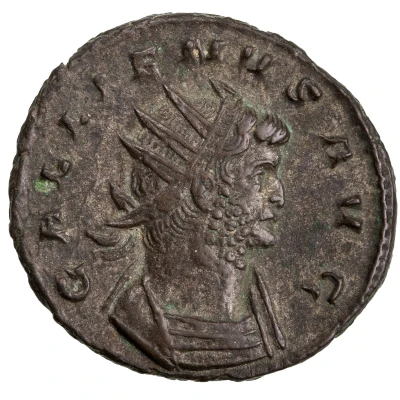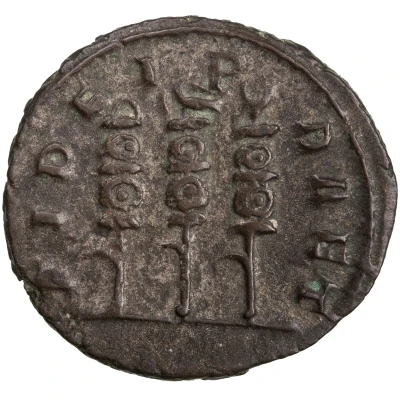Antoninianus - Gallienus FIDEI LEG
| Silver | - | - |
| Issuer | Rome › Roman Empire (27 BC - 395 AD) |
|---|---|
| Emperor | Gallienus (Publius Licinius Egnatius Gallienus) (253-268) |
| Type | Standard circulation coin |
| Years | 260-268 |
| Value | Antoninianus (1) |
| Currency | Antoninianus, Reform of Caracalla (AD 215 – 301) |
| Composition | Silver |
| Shape | Round (irregular) |
| Technique | Hammered |
| Demonetized | Yes |
| Updated | 2024-10-05 |
| Numista | N#289301 |
|---|---|
| Rarity index | 100% |
Reverse
Three trophies.
Script: Latin
Lettering: FIDEI LEG
Translation:
Fidei Legionibus.
For the loyalty of the legions.
Comment
Source:Online Coins of the Roman Empire (OCRE)
Interesting fact
The Antoninianus, also known as the Gallienus, was a coin introduced by the Roman Emperor Gallienus in 260 AD, during a time of economic crisis and military conflict. It was made of silver, but its purity was lower than that of previous Roman silver coins, which had been 95% pure. The Antoninianus was only about 50% pure silver, with the rest being made up of base metals like copper and bronze. Despite its lower purity, the coin was still widely accepted and used throughout the Roman Empire. This fact is interesting because it highlights the challenges faced by the Roman Empire during this time period. The empire was facing economic strain and military threats, which led to a decrease in the purity of its currency. However, despite these challenges, the Antoninianus remained a widely accepted form of currency, showing the resilience and adaptability of the Roman Empire.

